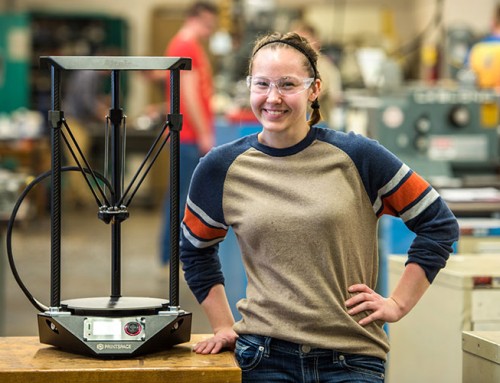3D Printed Robotics
3D printing itself is a practical application in robotics. Using a microcontroller, an extruder is directed over a surface, creating a print. Along with itself being an electro-mechanical system, in many ways a 3D printer is uniquely designed for constructing the mechanical parts for other electro-mechanical devices. Delta printers, like Altair, are actually derived from the design of delta robot industrial systems. Some groups and projects have been taking this to the next step, designing robotics expressly for 3D printing. Check out some of the work being done:
InMoov
The first project we’re looking at is the InMoov, whose goal is to create an open source 3D printed life size robot. Recently they featured at Makerfaires in both Italy and France. The goal is to create a humanoid robot that anyone can replicate assuming they have a printer with a 12 cm by 12 cm by 12 cm build area. Their site includes plans and detailed assembly instructions. However, it is still a work in progress. It’s been moving forward though, as within the last few months there’s been substantial improvement in the hand design.
MakerClub
On a smaller scale, Makerclub is a makerspace in England that has been producing much simpler printed robots. These are more comparable to the kind that you would find in a kid’s robotics kit. These robotic cars, arms, and insects all have very exposed designs, allowing you to easily see and work with the electrical components that run them. Many of them have most of their drive circuitry and logic on a bread board. These smaller scale creations definitely lend themselves to more educational contexts.
Poppy Project
The Poppy Project is shaping up to be less of an open source robot design, and more a modular standard. They provide printable designs for components that can be assembled into different models. Currently they have a small, tethered, humanoid build, and an arm-like design driven by six motors. They strongly encourage people to design their own “Poppy Creatures”, suggesting forking projects on Github or making your own using Poppy’s open source tools. If you have a background in working with Arduino boards or python programming, this is definitely worth taking a look at as your next project.
It seems that cheap at-home robotics is no longer a far fetched idea. Taking advantage of the new tools provided by 3D printing, it’s now possible to really experiment with multiple designs quickly. New mechanical designs can be tested by printing new pieces in a few hours. Why not try a robot for your next DIY project?






